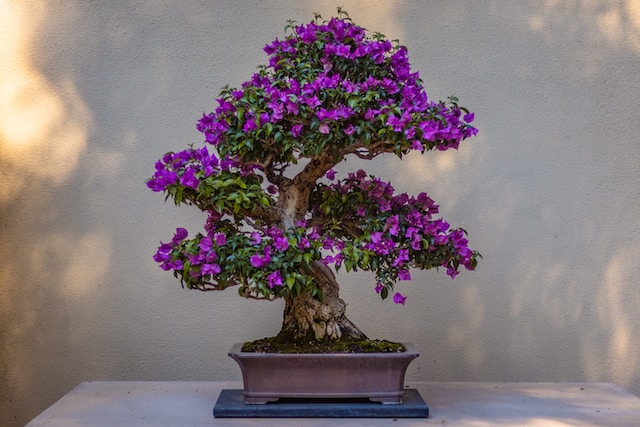Bonsai trees are living works of art, encapsulating the beauty and serenity of nature on a miniature scale.
Cultivating a bonsai is more than just tending to a plant; it’s a journey of patience, attention, and connection with the flourishing life.
If you’re thinking of delving into this enchanting world and learning to care for a bonsai tree, this comprehensive guide will lead you step by step.
1. Choosing the Ideal Bonsai
The first step is selecting the species of bonsai you wish to cultivate. Some popular varieties include Ficus, Black Pine, Boxwood, and Acer Palmatum. Research the growth characteristics, light, and water requirements of each species to find the one that suits your environment best.
2. Providing the Right Environment
Bonsai trees require a balanced environment to thrive. Make sure to place your bonsai in a location with the right amount of light. Some species prefer direct light, while others do better in areas with indirect light. Additionally, avoid abrupt temperature changes and drafts.
3. Watering Carefully
Watering is one of the most crucial aspects of bonsai care. Keep the soil moist but not waterlogged. Check the soil moisture by touching it with your fingers before watering. Use filtered water or let tap water sit for a day to eliminate chlorine.
4. Pruning and Shaping
Pruning is essential to maintain the desired size and shape of the bonsai tree. Use proper pruning shears to remove dead, diseased, or excessively long branches. Shaping is an artistic aspect of bonsai cultivation, allowing you to create the desired appearance through strategic pruning.
5. Fertilization and Nutrition
Bonsai trees need nutrients to grow and thrive. Use high-quality balanced fertilizer specifically formulated for bonsai trees. Follow dosing instructions and avoid over-fertilization, as it can harm the roots.
6. Repotting at the Right Time
Bonsai trees need to be repotted periodically to refresh the soil and roots. This is typically done every 2-3 years for young bonsai trees and every 4-5 years for older ones. The ideal time is in spring, before the onset of active growth.
7. Connection and Patience
Cultivating a bonsai tree is a journey that requires patience and dedication. Connect with your tree by observing its growth and responding to its needs. As you care for your bonsai over the years, you’ll see the reward of witnessing a living work of art flourish under your care.
Remember that each bonsai tree is unique and requires individualized attention. Learning to care for a bonsai tree is a rewarding experience that will connect you with nature in a special way. As you learn, grow, and refine your cultivation skills, you’ll be perpetuating an ancient tradition of transforming a plant into a living masterpiece.
Stay updated on news through our Facebook page!


